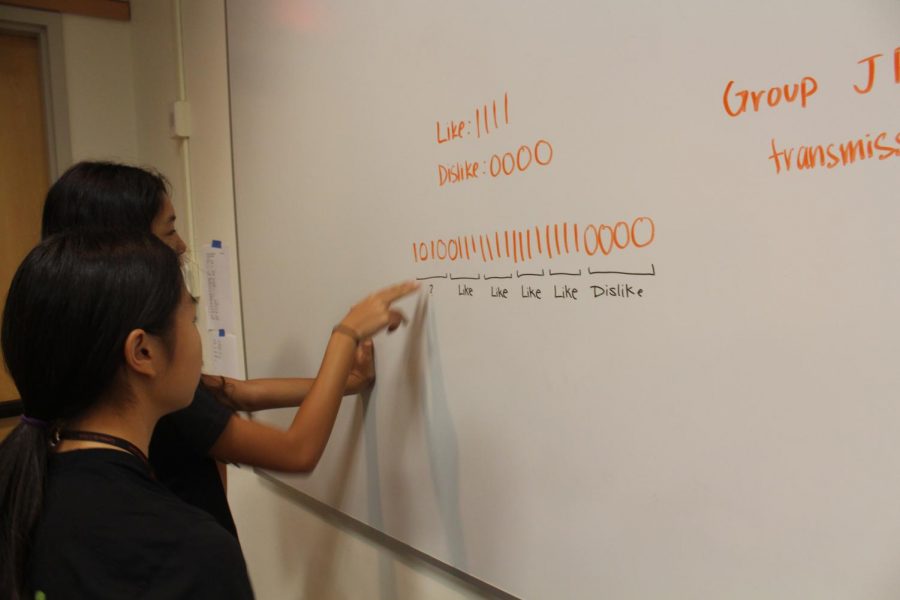Grand Valley hosts MathPath middle schoolers
Aug 19, 2019
Before Grand Valley State University students started pouring in for the fall semester, its dormitories were housing a much younger population than you’d expect on a college campus. One hundred 11 to 14 year olds came to Grand Valley from almost every state on the map (and several countries), spending June 30 to July 28 with the traveling MathPath program. Like many summer educational programs, MathPath gives students a chance to study concepts not typically encountered in middle school classrooms. But unlike such programs, MathPath has goals beyond advancement through upper level classes.
“We’re an enrichment program,” explained David Clark, the Grand Valley professor who brought MathPath to our university. “We don’t aim to just get through calculus really fast – sure you can learn calculus, but if you want to be a mathematician what you need is creativity, communication and the ability to draw connections. One thing we do that I think is fairly unique among math summer camps is the qualifying test taken as part of the application process, which is not a test of knowledge. It’s a test of willingness to dig into a problem and persist in learning something new. This year one of the qualifying test problems was ‘you’re going to play a game with another person and you have a pile of stones between you – you can take up to half of stones in the pile each turn, but if you the last stone on your turn, you lose.’ Coming up with a strategy to win illustrates mathematical thinking, but doesn’t require you to have background knowledge in algebra or geometry.”
This “low floor, high ceiling” approach to math enrichment means that attending students can study a diverse variety of topics, from non-Euclidean Geometry to the math of origami to Einstein’s “Special Relativity.”
“In this and past years I’ve taught a five day course on error correcting codes,” said Clark. “I start out with the kids trying to send messages to each other, and then introduce various noise or errors into the process. We help them correct those mistakes by developing the mathematics of it, all the while they’re sending messages and trying to create their own way of problem solving. On the last day we do open-ended puzzles where they find really unexpected ways of solving them. I teach a grad level class on this subject this fall, but our kids don’t necessarily have any formal mathematics background. The challenge is to take these ideas that are often expressed in advanced, formal ways and boiling them down to their essence, which kids can see or do hands-on. Once kids understand the basics, they will pick up the formal expressions really quickly.”
Between the creativity of Grand Valley’s math department and the extracurricular entertainment of West Michigan’s beaches and amusement parks, our summer campus proved a perfect location for mathematically inclined middle schoolers to have fun with their studies.
“These kids that are often alone in terms of their mathematical interests at school or at home,” Clark said. “They might be encouraged to learn more math, but don’t have the resources to do so. This shows them what math is like beyond school, even beyond college. We try to move the camp to different universities across the country, so different people have an easier time getting to camp. But I can definitely see MathPath coming back to Grand Valley in the future.”























